Projects
At LARCASE, we focus our research efforts on finding solutions aimed at reducing fuel consumption, decreasing flight times and attenuating the noise generated by aircraft, among other areas.
We are currently conducting numerous research projects at our Lab; learn about some of our flagship projects here.
Ongoing project
Dr. Botez is a collaborator on the DEEL project, which involves the application of artificial intelligent technologies in the aeronautical field.
Dr. Botez is a collaborator at the Centre interdisciplinaire de recherche en opérationnalisation du développement durable (CIRODD – Interdisciplinary research centre for the operationalization of sustainable development), which comprises more than 90 researchers and 200 students from the humanities, natural sciences, health and engineering fields collaborating and working together to operationalize sustainable development.
Research project conducted in collaboration with four universities and a number of drone companies.
The proposed program represents a response to the technological and societal challenges associated with the safe integration of Uninhabited Aircraft Systems (UAS) at all levels, from simple operations to complex missions.
This six-year program (2019-2025) is headed by Dr. Jeremy Laliberte from Carleton University. Dr. Botez is one of nine co-applicants on the team, which also includes four collaborators
The activities of the Canada Research Chair in Aircraft Modeling and Simulation Technologies, which was launched in 2011, revolve around two main research axes:
- Axis 1: Flight dynamics and control for aircraft and helicopters
- Axis 2: Active control technologies for deformable aircraft
Axis 1 focuses on developing new modeling and simulation methodologies for flight dynamics and control applied to aircraft and helicopters. Using flight test data, non-linear optimization algorithms are developed to identify and validate aircraft and helicopter models. The LARCASE team analyzes the stability of aircraft based on geometrical data.
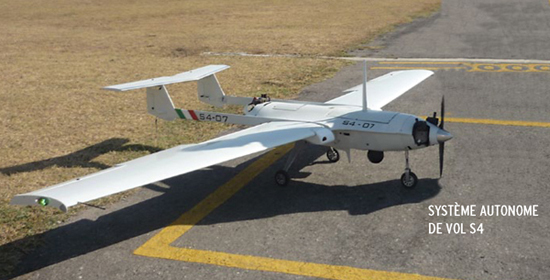
Axis 2 focuses on modifying the shape of wings and other geometric surfaces of autonomous aerial systems using active control systems to enhance the aerodynamic performance of aircraft.
The Price-Païdoussis subsonic wind tunnel, the research flight simulators for the Cessna Citation X and CRJ-700 aircraft and the UAS-S4 and UAS-S45 autonomous flight systems designed and manufactured by Hydra Technologies are used for Axes 1 and 2 of the Canada Research Chair.
The UAS was obtained thanks to research funds from the Canadian Foundation for Innovation (CFI), the Ministère du Développement économique, de l’innovation et de l’exportation (MDEIE) and Hydra Technologies. The research is conducted by the LARCASE team in collaboration with Hydra Technologies.
Aeroservoelastic studies (aeroelasticity and control) can be conducted at LARCASE thanks to the donation of the subsonic wind tunnel to Dr. Botez by Professor Emeritus Michael P. Païdoussis from McGill University. The wind tunnel was designed by Professor Stuart Price and Professor Païdoussis, both of whom are experts in fluid-structure interactions, vibrations and non-linear dynamics, aeroelasticity and aeroservoelasticity. It was obtained thanks to research funds from FCAR and NSERC. The wind tunnel is also used for collaborations between Professor Ruxandra Botez and Professor Païdoussis.
Watch the video of tests in the LARCASE wind tunnel focusing specifically on aileron displacement and wing rotation, as conducted by David Communier, PhD student.

FLSIM software is used for flight dynamics studies on business aircraft, in collaboration with Presagis.
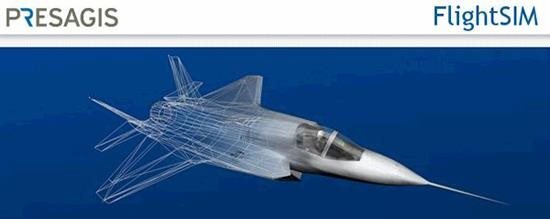
This project, which was launched in 2009 and conducted in collaboration with CMC Electronics, was part of the Excellence Center Network directed by the Green Aviation Research and Development Network (GARDN) funded by the Canadian Government until 2021.
We are currently continuing this project under the auspices of the Canada Research Chair, using high-level flight data provided by the two LARCASE flight simulators. Within the context of this project, aircraft flight trajectories are optimized for the purpose of significantly reducing fuel consumption and pollutant emissions.
A new methodology and new code were developed for the Cessna Citation X to determine stability derivatives from the aircraft’s geometrical data, which will then be useful in preliminary aircraft design.
During the preliminary design phase for new aircraft, aerospace companies seek to minimize decision time related to geometrical design. Ken Dustin, Denis Pelletier, Alexandra Savidis and Peter Jarvis from CAE Inc. are collaborators on this project, along with a number of other engineers, including Allan Cofin, Cleo Fontaine-Lavoie, Christian Hould and Mitchel Golemic.
The research flight simulator (modified IPT) for the Cessna Citation X aircraft, which is the fastest business aircraft, is equipped with a modifiable aerodynamics model for research designed by CAE Inc. This research flight simulator, which has been awarded the highest certification – Level D (flight dynamics) – was obtained through grants from the Canadian Foundation for Innovation (CFI), the Ministère du Développement économique, de l’innovation et de l’exportation (MDEIE) and CAE Inc. The original design of the simulator enables the LARCASE team to conduct a variety of research projects in collaboration with CAE Inc.
To learn more, watch this short video.
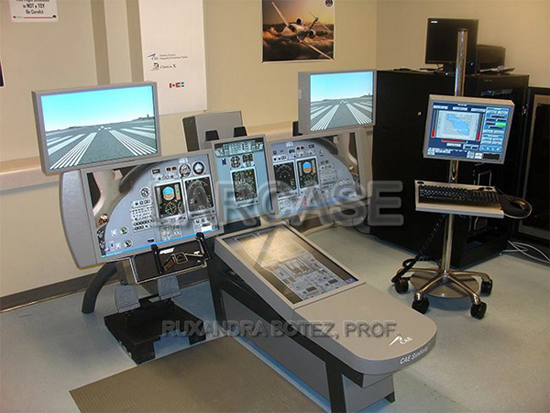
Completed project
This project is funded by CARIC within the context of the Mid-TRL: Maturing Technology Program. It is being conducted with GlobVision Inc., Thales Canada and Concordia University.
Dr. Botez’s team is working with Tristar Multicopters to develop a drone with 3 rotors within the context of the NSERC CREATE Program.
In this project, executed in collaboration with TAROM, aircraft flight trajectories provided by pilots with the Romanian Airline are optimized for future flights.
In this project, executed in collaboration with CMC Electronics-Esterline, flight trajectory algorithms in the vertical and horizontal paths of aircraft are designed and validated using the Flight Management System for numerous aircraft. The algorithms take into account the Required Time of Arrival, wind grids and all meteorological conditions.
The main objective of the project is to reduce carbon emissions and flight-related costs. The project is funded by the Green Aviation Research Development Business Led Network (GARDN) in its second and third round.
In this project, executed in collaboration with Thales, Bombardier Aerospace, Polytechnique Montréal and ARC-NRCC, along with researchers from Frederico II Naples University in Italy, the Italian Aerospace Research Centre (CIRA) and Alenia Aeronautica, a wing-aileron prototype was designed, tested and validated using wind tunnel tests at ARC-NRCC.
The objective of the project was to improve the aerodynamic performance of the prototype.
Canada
University collaborators:
- Simon Joncas (ÉTS)
- Éric Laurendeau (Polytechnique Montréal)
Industrial collaborators:
- Philippe Molaret (Thales Canada)
- Patrick Germain et Fassi Kafyeke (Bombardier)
- Mahmood Mamou, Youssef Mebarki et Brian Jahraus (IAR-CNRC)
Italy
Collaborators:
- Leonardo Lecce and Rosario Pecora (University of Naples)
- Antonio Concilio (CIRA)
- Salvatore Russo (Alenia Aeronautica)
Watch a short video on the execution of this multidisciplinary project (created for the completed projects competition funded by CRIAQ).
Video from PhD student Andreea Koreanschi, who received an excellence scholarship from CRIAQ.
In this project, executed in collaboration with FLIR (Montréal), a number of radar systems were tested in the subsonic Price-Païdoussis wind tunnel at LARCASE.
The CRIAQ 7.1 project (in the second CRIAQ round) entitled “Improving laminar flow on a research wing”, was executed in collaboration with Thales, Bombardier Aerospace, Polytechnique Montréal and the Aerospace Research Centre at the National Research Council of Canada (ARC-NRCC), along with researchers from LAMSI at ÉTS. In this project, the transition from laminar to turbulent flow on a wing with a flexible skin on its upper surface was controlled, and therefore delayed, using optical sensors and smart material actuators in a wind tunnel. Industrial collaborators on the project included Philippe Molaret (Thales Canada), Dr. Eric Laurendeau and Dr. Fassi Kafyeke (Bombardier Aerospace) and Mahmood Mamou, Dr. Youssef Mebarki and Brian Jahrhaus (ARC-NRCC).
The LARCASE team designed, developed, integrated and validated a controller for the transition delay on a morphing wing equipped with smart material actuators and pressure sensors. The controller was validated by the LARCASE team in wind tunnel tests conducted at ARC-NRCC.
The first film (1st WTTS) shows a sequence from the first wind tunnel tests on the morphing wing equipped with optical and Kulite pressure sensors, along with shape-memory alloys (SMAs). We can see the optical sensor system, the wing in the wind tunnel, the flight cases shown on the screen and the teams working on the project.
The second film (2nd WTTS) shows a sequence from the second wind tunnel tests on the morphing wing equipped with Kulite pressure sensors and shape-memory alloys (SMAs). We can see the control system, the wing in the wind tunnel, the flight cases shown on the screen and the teams working on the project.
The third film (3rd WTTS) shows the morphing wing concept in the ARC-NRCC wind tunnel.
The aeroservoelasticity studies were executed within the context of three projects conducted in this field using real flight data for the following aircraft: the F/A-18 Systems Research Aircraft (SRA), the Aerostructures Test Wing (ATW) and the F/A-18 Active Aeroelastic Wing (AAW). Main collaborator: Marty Brenner from NASA’s Dryden Flight Research Center (NASA-DFRC). Other collaborators from NASA-DFRC involved in the project between 1998 and 2003: Dr. Kajal Gupta, Tim Doyle, Ed Hahn, Roger Truax and Dr. Can Bach.
The flight test data were used for the following purposes:
- Validating new methods for converting aerodynamic forces from the frequency domain to the Laplace domain.
- Designing new algorithms for interactions between rigid, elastic and control modes.
- Developing new parameter estimation methods using fuzzy logic, neural networks, etc.
Video of aeroservoelastic interaction analysis on the F/A-18 SRA
This video, which shows the results of the research on the interaction of rigid, control and elastic modes on the F/A-18, is divided into two parts:
- In the case where the interaction is not well analyzed, the aircraft has a non-realistic and unstable behaviour.
- In the case where the interaction is well executed, the aircraft becomes stable.
The video was created by Dr. Lucian Grigorie and Dr. Adrian Hiliuta.
This project, executed in collaboration with Dr. Ioana Triandaf of the U.S. Naval Research Laboratory (NRL), focuses on two main objectives:
1) Developing and simulating a model UUV (Underwater Unmanned Submarine) to be constructed for the purposes of this project. Secondary goals:
- Determining the kinematic model and its equations of motion.
- Calculating hydrodynamic forces.
- Implementing the UUV model and its automatic pilot.
2) Developing calculation tools to resolve problems related to ocean surveillance:
- Optimizing constrained energy for UUV signal stations.
- Planning optimal trajectories for low-energy research.
- Optimizing surface coverage using multiple UUVs.
As part of the NATO project entitled “Prediction methods of stability and control of aerial and marine vehicles”, stability and control derivatives were calculated from geometrical data for the military X-31 and SACCON aircraft using knowledge of CFD applications like Edge and Fluent. Project participants analyzed data from wind tunnel tests at DLR in Germany and at NASA’s Langley Research Center.
Other collaborators were from the US Air Force Academy, NASA, ONERA, FOI, KTH, DNW-NWB, EADS, Braunschweig University, NWB LSWT, NAL, TAI-ODTU, DSTL, BAE Systems, Nangia Aero Research, University of Liverpool, IIHR-Hydroscience & Engineering, QinetiQ and other organizations. Dr. Andreas Schutte (DLR Germany) and Dr. Russ Cummings (US Air Force Academy) were the project leaders.
As part of the CRIAQ 3.2 project (first CRIAQ round) entitled ”Integration of real-time flight simulation with Computational Fluid Dynamics (CFD)” executed in collaboration with CAE Inc. and researchers from Concordia University and McGill University, new methods for estimating stability derivatives were developed based on geometrical data for the Hawker 800 XP aircraft using CFD knowledge. Main project collaborator: Peter Jarvis (CAE Inc.).
For this project, the LARCASE team opted to develop new code based on semi-empirical references selected from the literature, while researchers from other universities opted to use CFD techniques.
A video of the code developed at LARCASE for calculating stability derivatives based on the aircraft’s geometrical data, created by Dumitru Popescu, a Master student, shows the results obtained using the in-house code that was designed and developed in Matlab over a period of 5 years, based on references provided by US Datcom and other more recent references in aerodynamics. Non-confidential geometrical aircraft data was used for the video. It can be seen that the aerodynamic lift, drag and moment coefficients and their derivatives are very rapidly calculated based on a minimum amount of geometrical aircraft data.
The results for this project were validated with flight test data on the Hawker 800 XP. This work is used for the preliminary design of aircraft (and their individual components) and for aircraft stability analyses based on a minimum of geometrical data and flight tests.
In the CRIAQ 4.1 project entitled “MOSAIC Multidisciplinary Optimization”, a number of universities and industrial partners worked together to optimize the design of aircraft, helicopters and engines. University project leader: Dr. Jean-Yves Trepanier from Polytechnique Montréal.
The project team included engineers from Bombardier Aerospace, Bell Helicopter Textron and Pratt & Whitney, along with researchers from Polytechnique Montréal and Concordia University. Dr. Francois Pepin from Bombardier Aerospace collaborated on this project.
A new optimization algorithm for wing load cases on the CL-604 aircraft was developed at LARCASE, working in collaboration with Bombardier Aerospace. This new algorithm took into account the minimum load cases for the CL-604, which should help decrease development times for new aircraft.
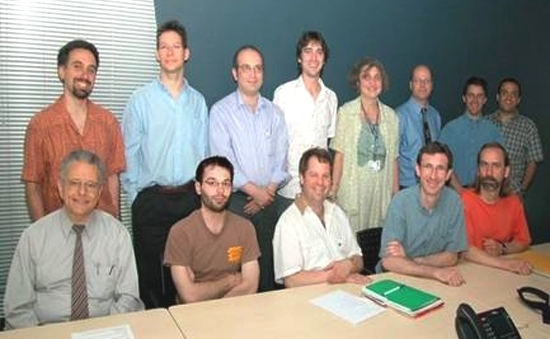
In the project entitled “Estimation of aerodynamic forces over time for aeroservoelastic interaction studies”, a large number of methods for converting aerodynamic forces from frequency to Laplace domain were designed and validated for aeroservoelastic interaction studies on the Bombardier Aerospace CL-604 aircraft. The main industrial collaborators on this project were Nicholas Stathopoulos, Sylvain Therien, Alexandre Rathe and Martin Dickinson (Bombardier Aerospace).
The project was funded by Bombardier Aerospace and NSERC. The Bombardier team then validated the algorithms in the McGill wind tunnel.
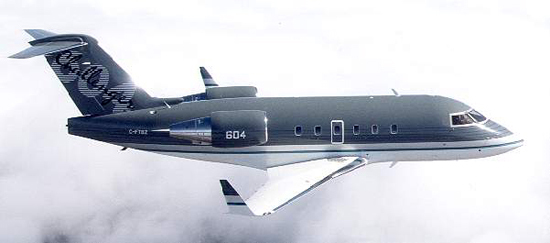
In the CRIAQ 3.4 project entitled “Implementation of a global model parameter estimation technology”, the LARCASE team, working in collaboration with the National Sciences and Engineering Research Council of Canada (NSERC) and Bell Helicopter Textron (BHT), validated a methodology for analyzing the aerodynamic critical cases for the B-427 helicopter and for developing a global model of the helicopter. The main collaborators on this project were Joey Seto and Ed Lambert (Bell Helicopter Textron), Dr. Ken Hui (ARC-NRCC) and Dr. Njuki Mureithi (Polytechnique Montréal).
The following critical cases were analyzed: auto-rotation, transition, manoeuvres close to flight envelope corners, ground dynamics, hovering, forward flight and ground reaction. These cases represent challenges for experts in terms of parameter estimation methods. This methodology was validated by flight tests at BHT, and was used for Level D high-fidelity simulator certification, in compliance with Federal Aviation Administration (FAA) rules.
The main advantage of this new method is a significant reduction in the number of flight tests, which considerably reduces the cost and time required for the development of new helicopters. This new approach resulted in an approximately 60% reduction of the development cycle.
- Video of the Bell-427 helicopter flight simulation based on flight test data (by Andrei Popov, PhD student at LARCASE)
- Video of the Bell-427 helicopter autorotation landing simulation based on flight test data (by Andrei Popov, PhD student at LARCASE)
- Video of the Bell-427 helicopter ground dynamics simulation based on flight test data (by Dr. Michel Nadeau Beaulieu, CAE – PhD graduate from LARCASE in 2007).
Contact us
LARCASE is located in the Systems Engineering Department at ÉTS:
- CAE Inc. research flight simulators for Cessna Citation X and CRJ-700 aircraft: room A-3420, 1100 Notre-Dame O. St., Montreal (514 396-8800, ext. 7647)
- Hydra Technologies Drone: room A-3572, 1100 Notre-Dame O. St., Montreal (514 396-8800, ext. 7645)
- Price-Païdoussis Subsonic Wind Tunnel: room S-0003, 1050 William St., Montreal (514 396-8800, ext. 7509)
Ruxandra Mihaela Botez, Founder and Head of LARCASE
Professor and Holder of the Canada Research Chair in Aircraft Modeling and Simulation Technologies (level 1)
514 396-8560
ruxandra.botez@etsmtl.ca
Oscar Carranza, research assistant
514 396-8800, ext. 7647
oscar.carranzamoyao@etsmtl.ca


